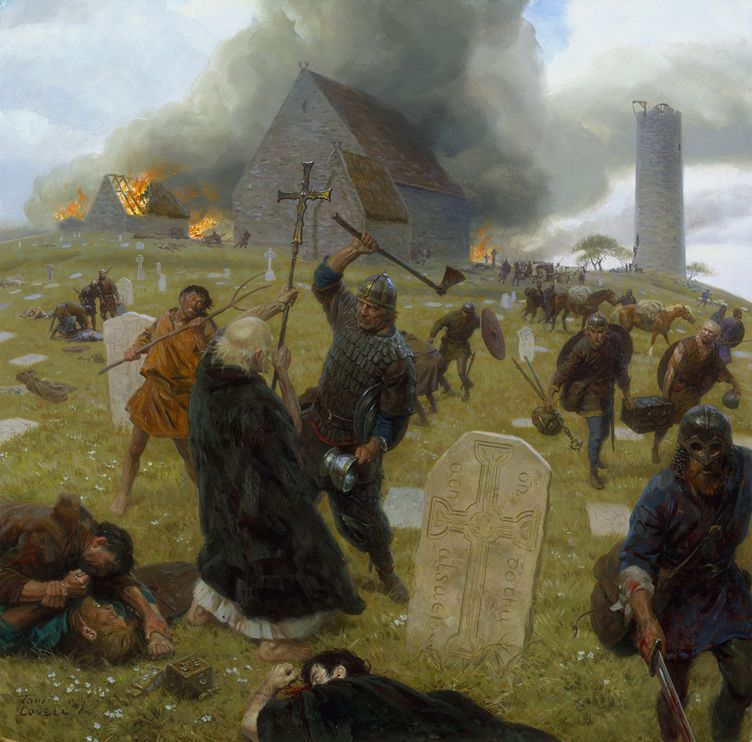
To modern readers the attack seems monstrous, even by the standards of medieval warfare. But the witness account contains more than a touch of hyperbole, writes Anders Winroth, a Yale history professor and author of the book The Age of the Vikings, a sweeping new survey. What's more, he says, such exaggeration was often a feature of European writings about the Vikings.
When the account of the Nantes attack is scrutinized, "a more reasonable image emerges," he writes. After stating that the Vikings had killed the "entire multitude," for instance, the witness contradicts himself by noting that some of the clerics were taken into captivity. And there were enough people left - among the "many who survived the massacre" - to pay ransom to get prisoners back.
In short, aside from ignoring the taboo against treating monks and priests specially, the Vikings acted not much differently from other European warriors of the period, Winroth argues.
In 782, for instance, Charlemagne, now heralded as the original unifier of Europe, beheaded 4,500 Saxon captives on a single day. "The Vikings never got close to that level of efficiency," Winroth says, drily.

Viking History Told by Their Victims
Just how bad were the Vikings?
Winroth is among the scholars who believe the Vikings were no more bloodthirsty than other warriors of the period. But they suffered from bad public relations - in part because they attacked a society more literate than their own, and therefore most accounts of them come from their victims. Moreover, because the Vikings were pagan, they played into a Christian story line that cast them as a devilish, malign, outside force.
"There is this general idea of the Vikings as being exciting and other, as something that we can't understand from our point of view - which is simply continuing the story line of the victims in their own time," Winroth says. "One starts to think of them in storybook terms, which is deeply unfair."
In reality, he proposes, "the Vikings were sort of free-market entrepreneurs."

But Winroth wants to put the final nail in the coffin of the notion that the Vikings were the "Nazis of the North," as an article by British journalist Patrick Cockburn argued last April. Viking atrocities were "the equivalent of those carried out by SS divisions invading Poland 75 years ago," Cockburn wrote.
Few scholars today hold Cockburn's view. In fact, some believe the trend Winroth represents - de-emphasizing Vikings' violence and stressing their similarities with other Europeans - goes too far.
"Other Europeans were perfectly horrible as well," agrees Tom Shippey, an emeritus professor of English at Saint Louis University, who writes often about the Vikings. But why, Shippey asks, slightly exaggerating, did the Vikings always win?
Much of the explanation, he says, is an "ethos that is unlike anything else in Europe," one that included reverence for the warrior ideal and a gallows-humor, "who cares?" attitude toward death.
In addition, points out Martin Arnold, a reader in Old Norse studies at the University of Hull, the pope placed limits on Christian warfare and threatened excommunication for leaders who became unduly aggressive. The Vikings had no such inhibiting force.
An alternate explanation for the Viking win-loss record, which Winroth embraces, is that Viking ships were so speedy and stealthy that the Norse almost always surprised their enemies. "I don't buy it," says Shippey.
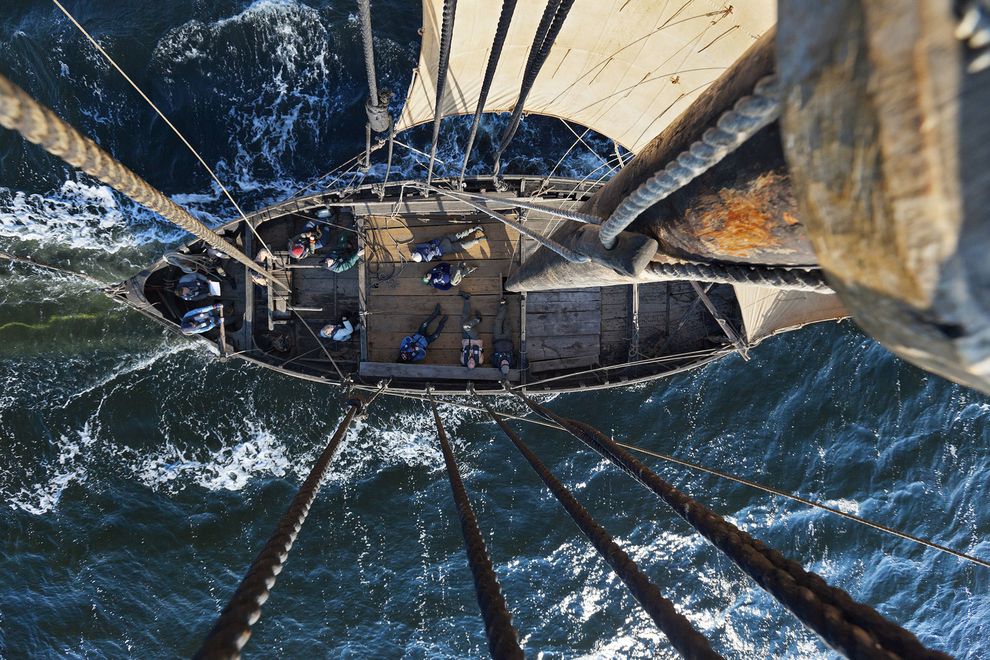
It used to be routine for scholars to claim that Vikings killed some of their victims by means of the so-called blood eagle. The form of an eagle reportedly was carved onto a victim's back, his rib cage severed, and his lungs pulled out the back.
But Winroth holds strongly to the view, first advanced by his Yale colleague Roberta Frank, that the anecdote derives from a misreading of the allusive, grammatically ambiguous, and metaphorically rich Viking verse written by the so-called skalds.
Skaldic poetry is full of birds, including eagles, that feast on the bodies of one's enemies. Through dubious grammatical readings, the authors of the Scandinavian sagas, written centuries after the Viking raids, turned an eagle cutting into a man's back into an eagle being carved on the back. Further embellishments and creative license took flight from that first error.
Winroth also wants us to rethink the berserkers, the supposedly near-psychopathic warriors in the front line of Viking attacks said to be immune to pain and possibly high on psychotropic mushrooms. The more colorful accounts add that they chewed on their shields and ate burning coals. But Winroth argues that references to berserkers first appear in the poetry of 13th- and 14th-century Iceland, and they are plainly described as people who lived "once upon a time."
But that doesn't necessarily rule out the existence of half-crazed warriors, says Robert Ferguson, an independent scholar and author of The Vikings.
"I don't have any particular trouble in imagining that the Vikings in the forefront of their attacks were men of violence, the kind of people you have in the Hell's Angels now. They would drink. They were almost psychopathic. I think we have berserkers [in modern armies] now. They just aren't called that anymore. "
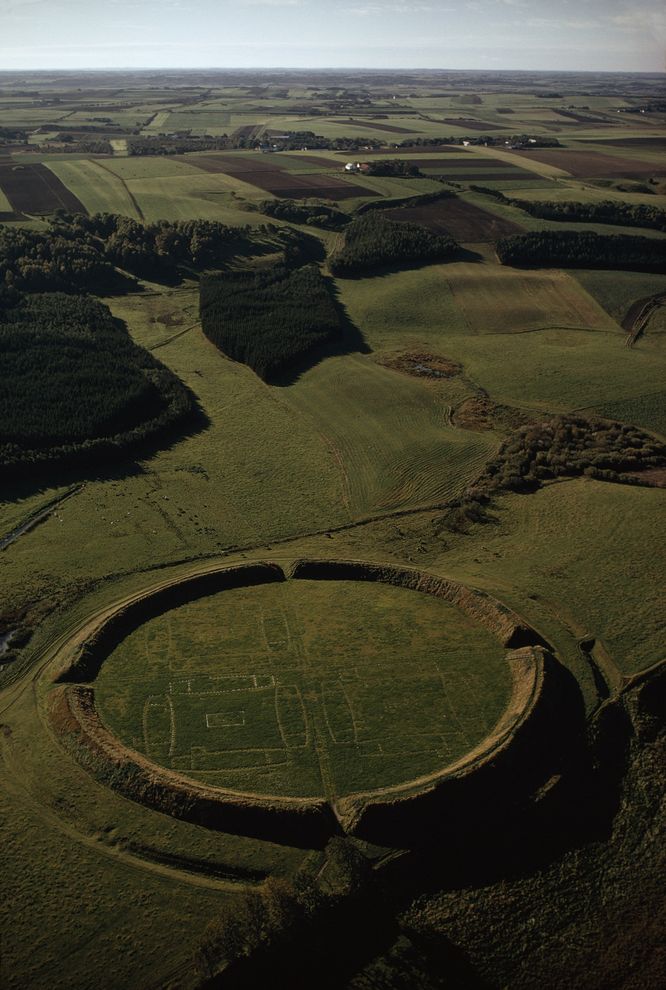
Rather than being primed for battle by an irrational love of mayhem, Vikings went raiding mainly for pragmatic reasons, Winroth contends - namely, to build personal fortunes and enhance the power of their chieftains. As evidence Winroth enumerates cases in which Viking leaders negotiated for payment, or tried to.
For example, before the Battle of Maldon in England, a Viking messenger landed and cried out to 3,000 or more assembled Saxon soldiers: "It is better for you that you pay off this spear-fight with tribute ... Nor have we any need to kill each other." The English chose to fight, and were defeated. Like anyone else, the Vikings would rather win by negotiation than risk a loss, Winroth says.
Nor was every place the Vikings attacked decimated, despite repeated claims by scribes that "everything was destroyed." Winroth notes that the trading post of Dorestad, in what is now the Netherlands, was sacked four times in four years, starting in 834, yet it continued to flourish. Viking raids were seen as an "overhead cost," Winroth writes, and a fair number of traders doing business in Dorestad would have been Norse.
Along those lines, Winroth stresses just how entwined the Norse were with other Europeans. In the 840s a Viking named Rörik, whose uncle had been king in Denmark, plundered the coastal regions of the kingdom of Emperor Lothair, in what's now Belgium and the Netherlands. Lothair then essentially hired Rörik to defend his land against other Viking raids, a common practice. Rörik became the equivalent of a European prince.
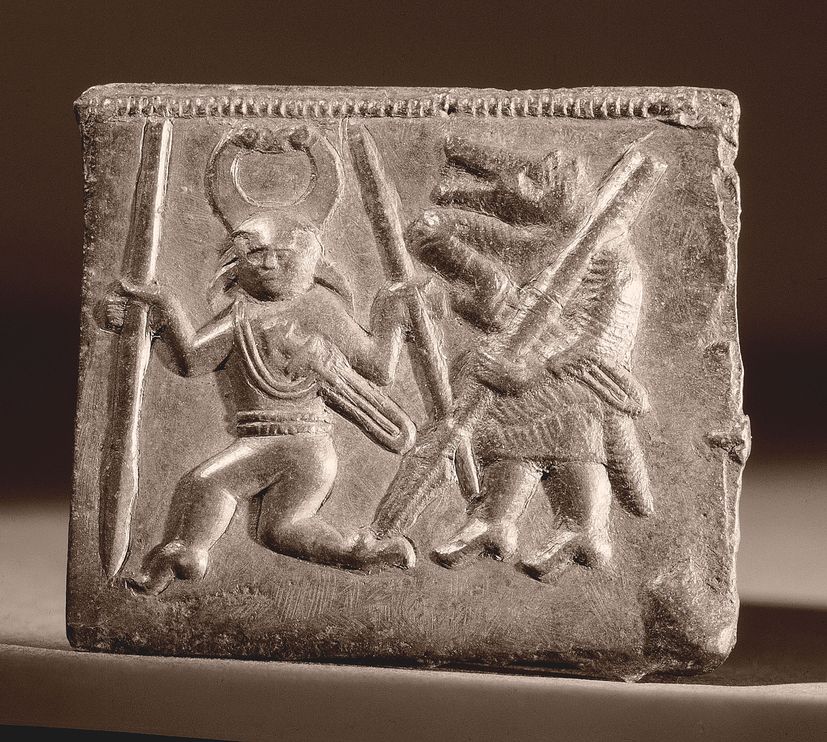
Yet even among scholars who attempt to see things from the Vikings' perspective, disagreements persist about the nature of Viking violence. Robert Ferguson, for example, doesn't downplay its ferocity, but he characterizes it as symbolic and defensive, a form of "asymmetric warfare."
In the year 806, for example, the slaughter of 68 monks on the Isle of Iona, off the coast of Scotland, sowed terror in Europe. Ferguson suggests that the move was designed to convince Charlemagne and others that it would be very costly to expand Christianity into Scandinavia by force. The Vikings "were fighting to defend their way of life," Ferguson says.
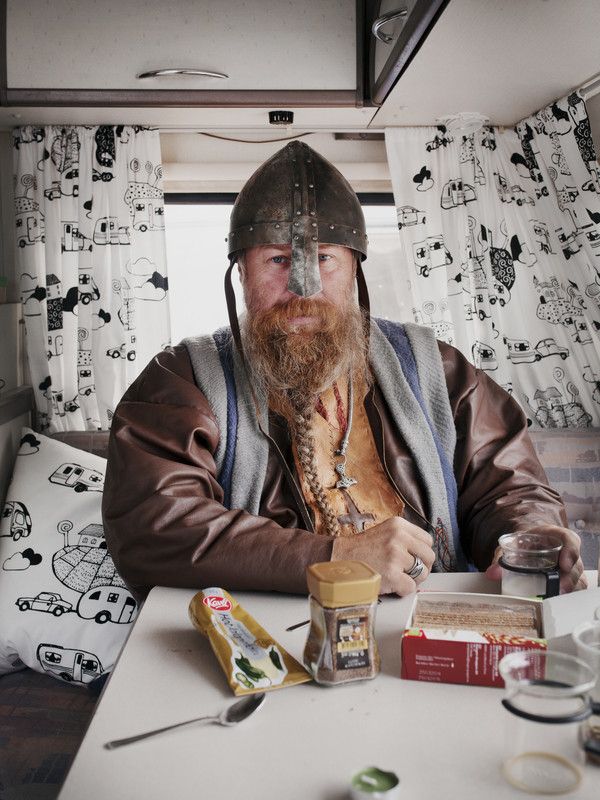
When his early work as a scholar on medieval church law helped him to win a MacArthur Fellow prize, the so-called genius grant, he used some of the funds to retrain himself as a scholar of the Norse.
Asked whether he thinks there's a danger of going too far in domesticating the Vikings, Winroth replies: "To domesticate them means to see them in context."
For a historian, he says, putting people in the context of their times humanizes them. And that's an unadulterated good, even when we're talking about people best known for rapine, plunder, and slaughtering monks.



I'm from Minnesota and we already knew that the Viking culture has been vilified, but thanks for confirming this.